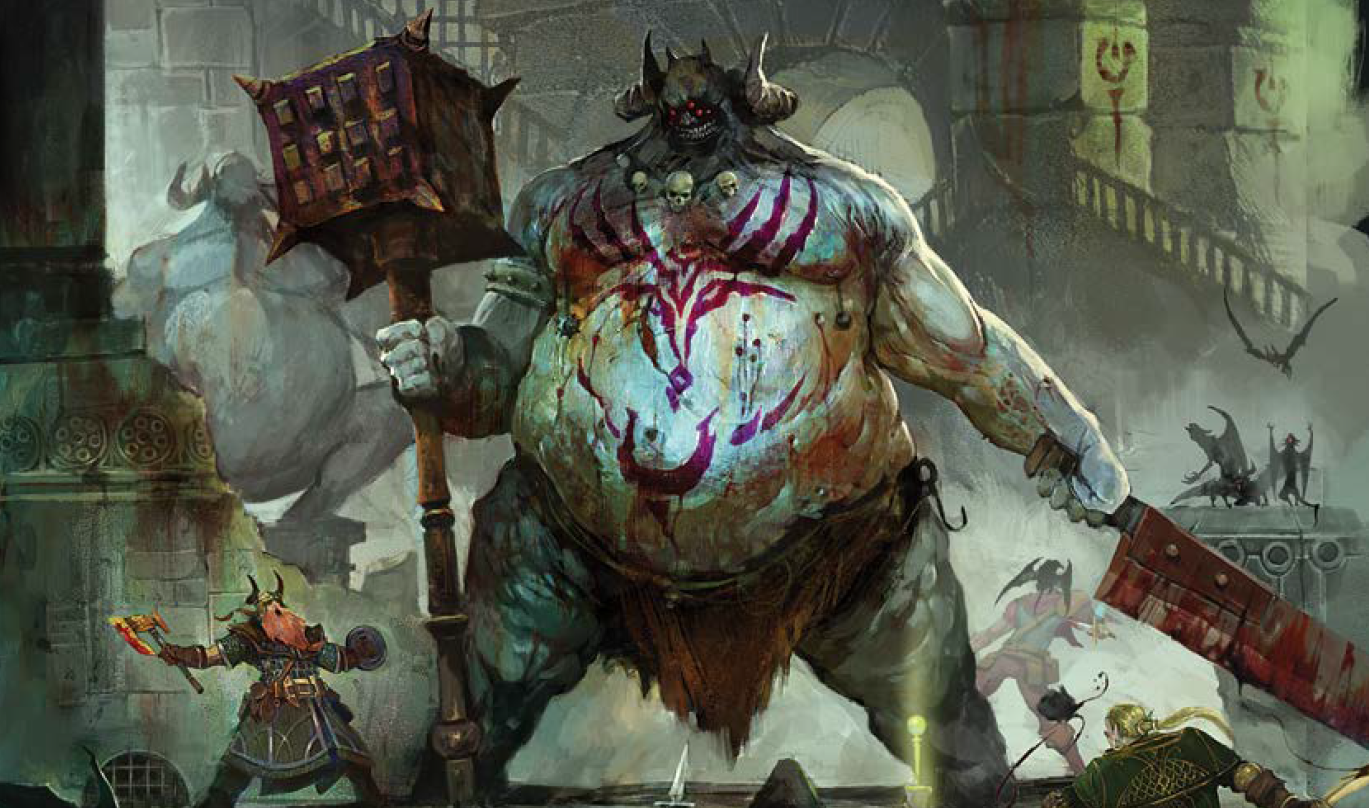 This morning, when I thought about writing about Shadow of the Demon Lord, I was totally amazed that I haven’t actually mentioned it on the blog at all. Robert Schwalb’s Shadow of the Demon Lord is an amazing dark fantasy game which rested for too long on my shelf basically unread. I bought the hardcover book back in December 2016 but I now finally had the time to give it a closer look.
This morning, when I thought about writing about Shadow of the Demon Lord, I was totally amazed that I haven’t actually mentioned it on the blog at all. Robert Schwalb’s Shadow of the Demon Lord is an amazing dark fantasy game which rested for too long on my shelf basically unread. I bought the hardcover book back in December 2016 but I now finally had the time to give it a closer look.
Shadow of the Demon Lord was influenced by a lot of games and settings I love. The rules remind me of a streamlined version of D&D combined with Novice, Expert and Master paths reminiscent of Warhammer Fantasy Roleplay’s careers. The setting, the world of Rûl, takes inspiration from the classic Warhammer World, but also from the fantasy-noir world of Eberron and the steam-fantasy setting of the Iron Kingdoms. This melange of different influences could easily end up in a weird Kitchen Sink setting, but Robert Schwalb managed to make everything fit together neatly.
When I first picked up SotDL I thought it might be an interesting alternative to Warhammer Fantasy Roleplay with a more modern and D&D-like ruleset. But it is so much more. Over the last few days I realized that SotDL is a flexible rule set which could be used for more than one setting easily. There is support for Green Ronin’s Freeport setting with the SotDL Freeport Companion. Schwalb Enterprises also released a sourcebook for Mad Max style gaming called “Godless”. People have also used SotDL for games set in Eberron, the Forgotten Realms, and even the Warhammer 40,000 universe. What makes SotDL so easily adaptable to other settings?
Characters in SotDL start out at level 0, defined by their Ancestries (like human, dwarf, changeling, clockwork, etc.). After surviving their first adventure they may choose a Novice path: Magician, Priest, Rogue, or Warrior. At 3rd level the characters can further specialize by picking an Expert path. There are sixteen expert paths including choices like Paladin, Assassin, Spellbinder or Thief. In most other games these choices would come with prerequisties, but not in SotDL. You started out as a Warrior, but now you want to throw magic spells around? Just pick a fitting Expert path and you’re good to go. Last but not least you pick a Master path at level 7. There are sixty-four of these in the core book including the Aeromancer, the Gunslinger, the Mage Knight, the Technomancer, and many more. With these many options you can build almost every character imaginable. This makes SotDL much more flexible than class-based systems.
What I also love about SotDL is that in its “default mode” campaigns are limited to about 11 adventures. Each time the characters reach a certain milestone (like the end of an adventure) the GM can decide to let them level up. SotDL doesn’t make use of experience points. Each character can reach level 10 after which the campaign should come to an end. This also fits in neatly with the apocalyptic premise of the game. The Demon Lord is an otherworldly force trying to break out of the void and into the reality in which Rhul exists. Since he’s trapped in the void (much like Cthulhu lies dreaming in R’lyeh) only his Shadow falls on the world. This Shadow can take many forms including a Black Sun, Demon Incursions, or Winter’s Grasp which causes the world to enter a new ice age. The campaign is about trying to drive back the apocalypse as long as possible or to stop it in its tracks entirely.
Another aspect of SotDL that I love is the boon and bane mechanic. Action checks are made with a d20 vs. a difficulty level. Result equal or higher than the DL are successful. The DL of hitting a foe is the foe’s Defense (basically the AC), while all other tests are made against a DL of 10. Favorable conditions add boon dice while unfavorable dice add bane dice to the roll. Bane and boom dice (which are six-sided dice) cancel each other out. After rolling the dice only the highest result is added (or substracted) from the result on the d20. Brilliant!
In my opinion SotDL hasn’t gotten as much attention as it deserves. It’s an awesome game with a lot of support by Schwalb Entertainment and a small community of fans (Update: someone pointed out to me, that this “small” community has almost 2200 members. Oops, my bad!) . If you’re looking for an extremly flexible and cleverly-written dark fantasy RPG look no further.




Wicked looking fellow in that first pic.